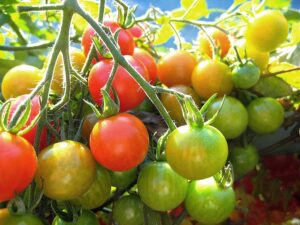Growing up, my parents worked a lot and when I wasn’t in school, they would send me to my grandparent’s house in Weymouth. My Nana and Papa always loved having me come over to hang out with them. We would play board games or look at old pictures of my dad as a child, but on sunny days my Nana would take me out to garden with her in the side- yard. Along the side of their home, she had a beautiful garden filled with many vegetables, fruits, and flowers. It smelled so beautiful and sometimes I would even be able to eat some ripe strawberries or tomatoes with her.

One year, on a beautiful Saturday in the Spring, my Nana and I went out to plant some daffodils. What we hadn’t realized was that above the garden under the gutter of the house, their was a bee’s nest and the pesky insects were swarming around that day. My Nana decided to let me water the plants that day too, and I was so excited because she had never trusted me with the hose before. I was holding the hose waiting for the water to come spouting out of the end and then, things went wrong.
My Nana had good reasoning behind not allowing me to water the plants before this day, and after this day, I wasn’t ever allowed to do it again. With the combination of the powerful hose and my noodle arms, I had lost control of it and water was flying everywhere. Normally, this wouldn’t have been such a problem with it happening outside and the weather being so warm. But, while my Nana was laughing at me trying to gain control back, she had not realized the water was spraying straight into the bee’s nest.
The bee’s became infuriated that someone was disturbing their lives and ruining their home, and they wanted revenge. Once my Nana had realized what was happening, she called out my name and told me to run as if my life depended on it, which it really did because I’m allergic to bee’s. The angry insects came flying at my Nana and I and we were running all around the yard to avoid getting stung. All I knew was that I would be okay because my Nana couldn’t run fast, but I could. Safe to say I haven’t gardened with Nana since that day.




















